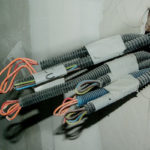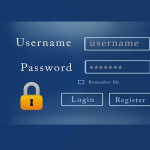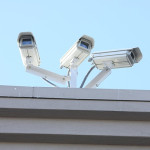Avoid These Common Security Camera Mistakes
Whether you rent or own your home, you want to make the property as unattractive as possible. Things like outdoor lighting, guard dogs, alarms and security systems act as deterrents for would-be burglars and trespassers. Unfortunately, common mistakes can weaken your security measures. Discover the most common security mistakes and ways to avoid them.
- Mistake: Hiding Security Cameras
Although they may take away from your home’s aesthetic, your security cameras should be visible from the street. One of the benefits of security cameras is that they act as a deterrent for burglars. By hiding your cameras, you negate that benefit. And even if they do not succeed at discouraging thieves, you will have video footage that can help to identify the trespassers.
But remember, you want the cameras to be visible, but also out of reach to prevent tampering and vandalism. A sign warning that your property is under surveillance can also help.
- Mistake: Camera Positioning/Locations
Choosing the right locations for your security cameras may seem easy, but there are lots of factors to take into account. Security cameras should be able to provide proper coverage around the clock. You need to consider direct sunlight in the afternoon, which can washout the footage, or how things such as rain, snow, or tree branches, may compromise the field of view and produce unusable footage. In addition, internet-connected smart cameras need to be installed where there is strong and consistent Wi-Fi signal.
Keep your camera in a sheltered area that’s in the shade all day. You may even want to invest in camera housing for added protection. Also, test your live feed in a variety of weather conditions to ensure your cameras produce usable footage in all situations.
- Mistake: Buying Cheap Systems
While low-priced systems may seem appealing, often times you get what you pay for. These systems may not come with the special features you want or need, but if budget constraints limit your options, something is better than nothing. However, if you have a more flexible budget, you should be sure your basic needs are met.
The most important takeaway: do your research. Read reviews and users’ feedback, search online for examples of the video output, and look into warranties and technical support should you need it in the future. You should trust that you are investing your time and money into a quality camera that will satisfy your surveillance needs.
- Mistake: Not Changing Passwords
When you have an internet-connected system, you are able to access your feed remotely. A default username and password are used for the initial access. A common mistake is that users do not change these default username and passwords, which are usually available on the manufacturer’s website. Hackers know this and if you fail to change these, they can gain access to your feed. From there, they can learn about your daily routines and get an idea of the layout of your home.
It is strongly advised to change the defaults as soon as possible and create a password that is unique, but that you can remember.
- Mistake: DIY Installations
Professional installation can help you avoid many of the aforementioned mistakes. They will choose appropriate locations for your cameras based on your needs and the environmental factors. If your cameras aren’t functioning properly, they will come back to fix the issue and most companies will offer a warranty. If you opt for a DIY installation, you are responsible for any issues that arise.
Need help finding the right security system for you? Choose SecurityCamExpert.com! We can guide you through the process of choosing the security cameras that will best suit your needs. If you are in Southern California, we can even install the system for you. Visit us online or call 888-203-6294 to learn more. You can also connect with us on Facebook, Google+, Twitter, Linkedin, and Pinterest.
Building The Ideal CCTV Surveillance System
When it comes to securing your property, CCTV cameras can be very effective. However, because there are a wide variety of CCTV cameras suited for different applications, if they are not properly implemented, their effectiveness may be compromised.
Before choosing your surveillance system, review the different types of CCTV cameras and the application for which they are best suited.
Different Types Of CCTV
Dome Camera
- Commonly used for indoor surveillance
- The ambiguous shape & design acts as a deterrent as criminals are unsure which way the camera is facing
- Ease of installation
- Vandal-proof features
- Infrared capability
Bullet Camera
- Long, cylindrical shape ideal for long distance viewing
- Better suited for outdoor use
- Protective casings safeguard against dust, dirt, and other natural elements
- Compact size makes for easy installation and mounting with bracket
- Fitted with either fixed or varifocal lenses depending on the requirements of the intended application
- Adaptability (can be used indoors and outdoors)
- High quality image resolution
C-Mount Camera
- Detachable lenses allow for simple lens changes to fit different applications
- Specialized lens use allow these cameras the ability to cover distances beyond 40ft
- Can support changes in technology
- Effective for indoor use
- Bulky design and presence acts as a deterrent
Day/Night Camera
- Can operate in both normal and poorly lit environments
- They utilize extra sensitive imaging chips (instead of infrared illuminators)
- Ideal for outdoor applications in which IR cameras do not function optimally
- Record in both color and black & white
- Wide variety of sizes available
- IR (Infrared) capability
PTZ (Pan/Tilt/Zoom) Camera
- Used with live guard or surveillance specialist operating the security systems
- Pan and tilt rotation
- Smart tracking features
- Powerful zoom and autofocus
What To Consider
Choosing the right CCTV camera for your property is important. You want to evaluate your needs to determine where you will place these cameras as well as their primary use in that location. Some factors to consider when choosing include the lens, sensor, and output resolution.
- Lens
The lens will dictate the quality of the image. The appropriate lens will allow your camera to focus and bring in enough light to the sensor, providing clarity and the ability to better identify things such as faces and license plates. A zoom lens will allow for further detail since it can adjust the light as it reaches to sensor for enhanced pictures and flexibility.
- Sensor
There are two types of sensors:
- CMOS (complementary metal oxide semiconductor)
- CCD (charged coupled device) cameras
CCD are more expensive than CMOS and produce clearer images (ideal for identifying faces and license plates).
- Output Resolution
Generally speaking, the more pixels, the better the picture. The highest resolution you can get is 700TL, but most cameras range between 300-550TVL. Be sure to match a resolution that your camera can produce because anything more is unnecessary.
Other Things To Consider:
- Discreet Vs. Visible
Box cameras are easier to be seen and clearly tell passersby that they are being recorded, which acts as a great deterrent. Dome cameras, on the other hand, are smaller and more discreet, making them ideal for monitoring larger areas such as front or backyards.
- Indoors Vs. Outdoors
Consider where you will place your cameras both indoors and outdoors. If you plan on placing them outdoors, you want to ensure they are in the best location and well protected (weatherproof and vandal proof housing). For indoor cameras, you want to make sure it will not be affected by things like grease or steam from the kitchen.
- Lighting Conditions
Whether indoors or outdoors, lighting will always change so it is advised that you test different camera models to see what works best with your lighting conditions. You also want to check for any reflections or backlighting during day or night.
- Image Clarity
This will depend on the size of the area you want to monitor. Thus, a camera situated in a small room need not be of high resolution. The resolution of your CCTV camera should reflect the landscape in order to provide effective images.
- Audio?
This depends on your personal preference (you should also look into the laws regarding audio recording if applicable). Some CCTV systems allow you to speak to the intruders, or you can have audio or alarms sound automatically when they reach a certain point. These tactics are meant to scare the intruders away before they can cause damage.
If you need help choosing the right CCTV surveillance system, call 888-203-6294 and we will be happy to help! You may also browse our selection online at SecurityCamExpert.com and connect with us on Facebook, Google+, Twitter, LinkedIn, and Pinterest.


